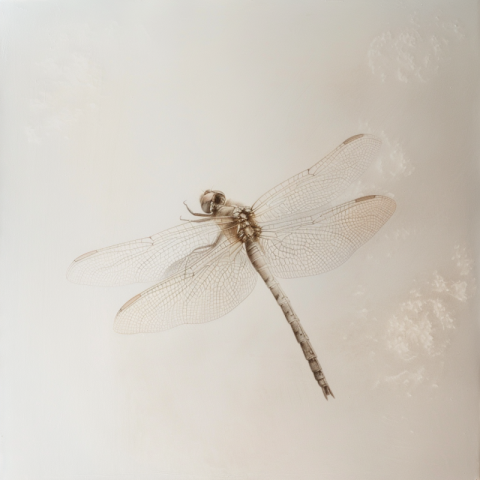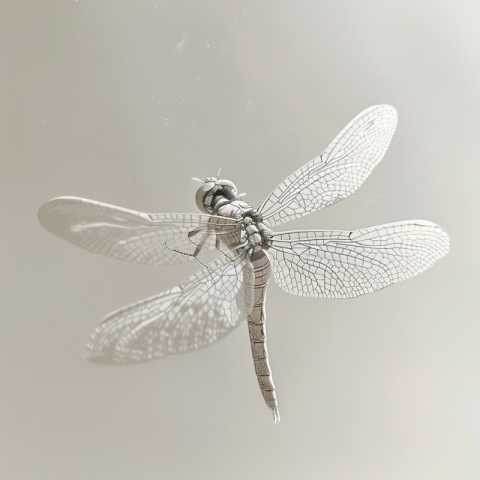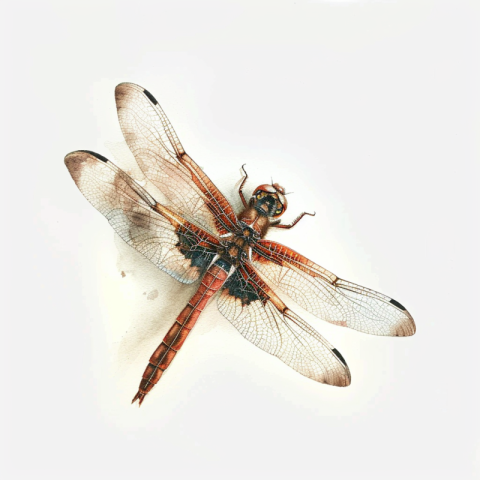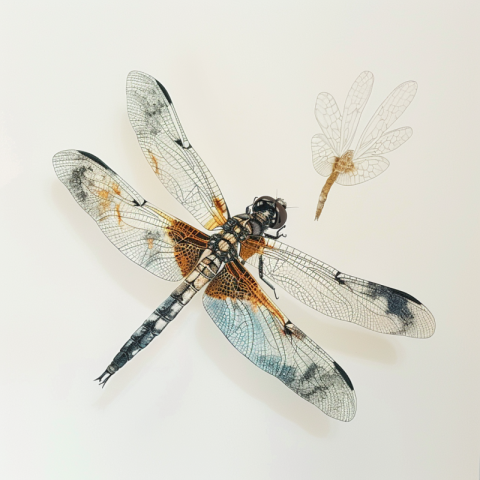



Dragonflies: Aerial Acrobats - Biology, Behavior, and Conservation
Dragonflies are among the most ancient and skilled fliers in the insect world. Belonging to the order Odonata, which also includes damselflies, dragonflies are known for their large, multifaceted eyes, two pairs of strong, transparent wings, and elongated bodies. These aerial predators are a common sight near freshwater habitats, where they hunt, mate, and lay their eggs. This exploration delves into the captivating world of dragonflies, covering their biology, behavior, diversity, and ecological significance.
1. Dragonfly Biology and Anatomy:
- Exoskeleton: Like all insects, dragonflies have a hard exoskeleton made of chitin.
- Body Segmentation: Their bodies are divided into three segments: the head, thorax, and abdomen.
- Head: Dragonflies have large heads dominated by their enormous compound eyes, which provide nearly 360-degree vision. They also have powerful mandibles for capturing and crushing prey.
- Thorax: The thorax is the middle section of the body, where the wings and legs are attached. Dragonflies have a robust thorax that houses the powerful flight muscles.
- Wings: Dragonflies have two pairs of long, membranous wings with a network of veins. Unlike most insects, they can move each pair of wings independently, allowing for incredible maneuverability.
- Abdomen: The long, slender abdomen contains the digestive and reproductive organs.
2. Dragonfly Life Cycle (Incomplete Metamorphosis):
Dragonflies undergo incomplete metamorphosis, meaning they do not have a pupal stage:
- Egg: Female dragonflies lay their eggs in or near water, often on aquatic plants.
- Nymph (Naiad): The aquatic larval stage, known as a nymph or naiad, hatches from the egg. Nymphs are predatory, feeding on other aquatic insects, tadpoles, and even small fish. They breathe through gills located in their rectum.
- Adult: The nymph emerges from the water, usually climbing up a plant stem, and undergoes its final molt, transforming into a winged adult.
3. Diversity of Dragonfly Species:
There are over 5,000 known dragonfly species worldwide, exhibiting a variety of sizes, colors, and wing patterns. Some notable families include:
- Skimmers (Libellulidae): The largest family of dragonflies, often brightly colored and found near ponds and lakes.
- Darners (Aeshnidae): Large, powerful fliers with a distinctive "darning needle" shape.
- Clubtails (Gomphidae): Named for the widened tip of their abdomen.
- Spiketails (Cordulegastridae): Large dragonflies that often patrol streams and rivers.
- Emeralds (Corduliidae): Often have metallic green or bronze coloration.
4. Dragonfly Behavior:
- Flight: Dragonflies are masters of flight, capable of hovering, flying backward, and making rapid turns. Their independent wing movement allows for exceptional agility.
- Hunting: Dragonflies are aerial predators, catching insects on the wing. They use their excellent vision to spot prey and their legs to form a basket-like structure to capture it.
- Territoriality: Male dragonflies are often territorial, defending areas near water where they mate and females lay eggs.
- Mating: Dragonfly mating is unique. The male transfers sperm to a secondary organ on his abdomen, then grasps the female behind the head with claspers at the tip of his abdomen. The female then curls her abdomen forward to receive the sperm, forming a "wheel" or "heart" shape.
5. Dragonfly Diet and Feeding:
- Nymphs: Dragonfly nymphs are voracious predators in aquatic ecosystems, feeding on a variety of invertebrates and even small vertebrates. They have a specialized extendable lower lip (labium) with hooks that they use to capture prey.
- Adults: Adult dragonflies feed on flying insects, including mosquitoes, flies, moths, and even smaller dragonflies.
6. Dragonfly Communication:
- Visual Displays: Dragonflies primarily communicate through visual cues, such as wing movements, body postures, and color patterns. Males often engage in aerial displays to attract females and defend territories.
- Some limited evidence for chemical communication via pheromones but less understood than visual cues.
7. Ecological Importance of Dragonflies:
Dragonflies play important roles in both aquatic and terrestrial ecosystems:
- Pest Control: Dragonflies consume large quantities of insects, including many pests such as mosquitoes and flies.
- Indicator Species: Dragonflies are sensitive to water quality and habitat changes, making them useful indicators of environmental health.
- Food Source: Dragonflies are an important food source for birds, fish, frogs, and other animals.
8. Threats to Dragonflies:
Dragonfly populations face various threats:
- Habitat Loss: The destruction and degradation of wetlands, ponds, and streams eliminate dragonfly breeding and foraging habitats.
- Water Pollution: Pesticides, industrial chemicals, and other pollutants can harm or kill dragonfly nymphs.
- Climate Change: Changes in temperature and precipitation patterns can affect dragonfly distribution and life cycles.
- Invasive Species: Introduced fish and other aquatic predators can reduce nymph populations.
9. Dragonfly Conservation:
Protecting dragonfly populations requires:
- Habitat Protection and Restoration: Conserving and restoring wetlands and other aquatic habitats is essential.
- Improving Water Quality: Reducing pollution from agricultural runoff, industrial discharge, and urban development.
- Controlling Invasive Species: Preventing the introduction and spread of invasive species that prey on dragonflies.
- Public Awareness: Educating the public about the importance of dragonflies and their conservation needs.
10. Studying Dragonflies (Odonatology):
The scientific study of dragonflies and damselflies is known as odonatology. Scientists study various aspects of dragonfly biology, behavior, ecology, and evolution. Citizen scientists can contribute to dragonfly research by participating in monitoring programs and reporting dragonfly sightings.
Conclusion:
Dragonflies are fascinating insects with remarkable flight abilities, predatory behavior, and a complex life cycle. They play important roles in ecosystems as both predators and prey, and their presence is an indicator of healthy aquatic environments. By understanding the threats they face and taking steps to protect their habitats, we can help ensure the survival of these aerial acrobats for generations to come.
Dragonfly life cycle, dragonfly nymph, dragonfly wings, dragonfly flight, dragonfly eyes, dragonfly mating, dragonfly diet, dragonfly species, skimmers, darners, clubtails, spiketails, emeralds, odonata, odonatology, dragonfly conservation, threats to dragonflies, habitat loss, water pollution, climate change, invasive species, pest control, indicator species, dragonfly behavior, territoriality, incomplete metamorphosis, naiad, labium, compound eyes, aerial predator, aquatic insect, wetland conservation, water quality, dragonfly migration, Anisoptera, Zygoptera (damselflies), dragonfly eggs.
